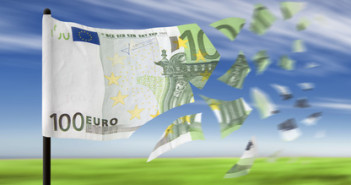The euro-zone’s locomotive needs some rest. Germany’s economy grew by only 0.1% in Q2. Together with French flat growth, we are seeing a turn for the worse also in the leading bloc. Will Trichet consider lowering the rates?
The weak German figure is significantly lower than a modest growth rate of 0.5% that was expected, and much lower than the 1.3% printed in Q1 – a figure that led the whole euro-zone forward.
There were many signs of slowdown before this release: purchasing managers’ indices, a stall in the drop in unemployment, factory orders and also business confidence. Germany just couldn’t push the old continent forward when the whole continent and the whole world is slowing down.
At the beginning of Q2, the ECB made its first rate hike. Was it justified to fight inflation? We now see that it also had a negative impact on growth. At the beginning of Q3, Trichet made another move, despite a lot of evidence showing that the economies are struggling.
Can Trichet change his mind? Apparently, Europe doesn’t suffer from inflation, but rather from slow growth. Yes, even at the core.
Trichet already showed flexibility when he attended to massive bond buying – his efforts in the Spanish and Italian bond markets had great success. The ECB still prefers tighter monetary policy alongside “special measuresâ€. This academic separation is damaging, and we received more evidence that a tighter monetary policy isn’t necessary.
EUR/USD dropped moderately, as the markets are awaiting the Merkel-Sarkozy summit. But these important news will continue weighing on the euro for some time. Later today, GDP will be released for the whole euro-zone. Prior to the German publication, expectations stood on +0.3%. Flat or even contraction is more realistic now.
For more on EUR/USD, see the euro dollar forecast.



